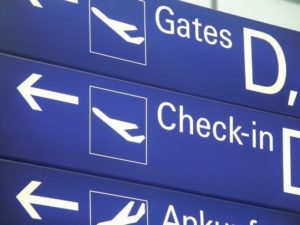
The United States Customs and Border Protection agency (CBP) has announced an expansion of its facial recognition screening program for its optional Global Entry program.
The CBP has been behind a rollout of facial recognition systems at a number of ports of entry across the country over recent months, including deployments at international airports.
The expansion of the Global Entry program — which until now has involved allowing frequent travelers who are profiled as “low risk” to skip CBP officers and, after scanning their passport and submitting to a fingerprint scan, go directly to baggage claim — will soon be further streamlined to allow these same pre-approved passengers to also skip the passport and fingerprint scans and achieve clearance for travel once they have gone through a facial biometric scan.
Initial trials for facial recognition scans by the CBP began in a pilot program in 2018 at the Orlando International Airport, and the program has since been expanded to include 14 more airports, including two in Ireland and one in the Bahamas.
A privacy impact statement was released by the agency on Monday that outlines how the program will be rolled out at the additional airports, making it the new standard for the Global Entry program.
As NextGov reports, Kiosks that are already used for Global Entry may be upgraded or replaced as the program expands, and will default to using the facial recognition technology. CBP says it will post privacy notices on the upgraded machines in order to inform travellers of the new system.
The system will operate by having passengers step up to the kiosks and have their faces scanned by the cameras. The image captured will then be matched against a gallery of images compiled from one of CBPs Automated Targeting System, ATS, the Unified Passenger Module, or UPAX.
The privacy statement reads that “CBP may have captured these images from U.S. passports or visas, previous entry inspections, and/or other DHS encounters, including Global Entry enrollment photos. The [Traveler Verification Service] then generates a biometric template for each gallery photograph and stores the template, but not the actual photograph, in the TVS cloud for matching when the traveler arrives at the Global Entry kiosk.”
The impact statement also notes that the passport and fingerprint method will remain as an option to anyone not willing to use the facial recognition program, and that should there be any technical issues with facial recognition, the kiosks will default to the passport and fingerprint method.
Source: NextGov
–
January 17, 2020 – by Tony Bitzionis





Follow Us